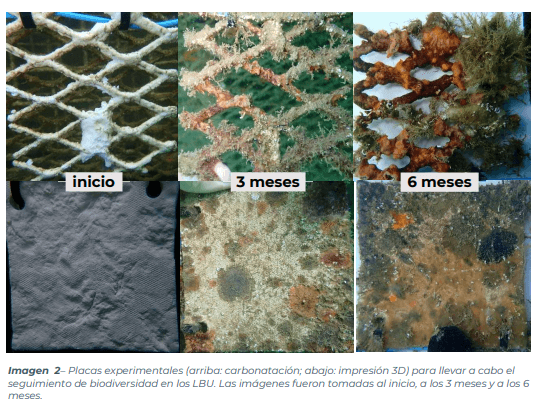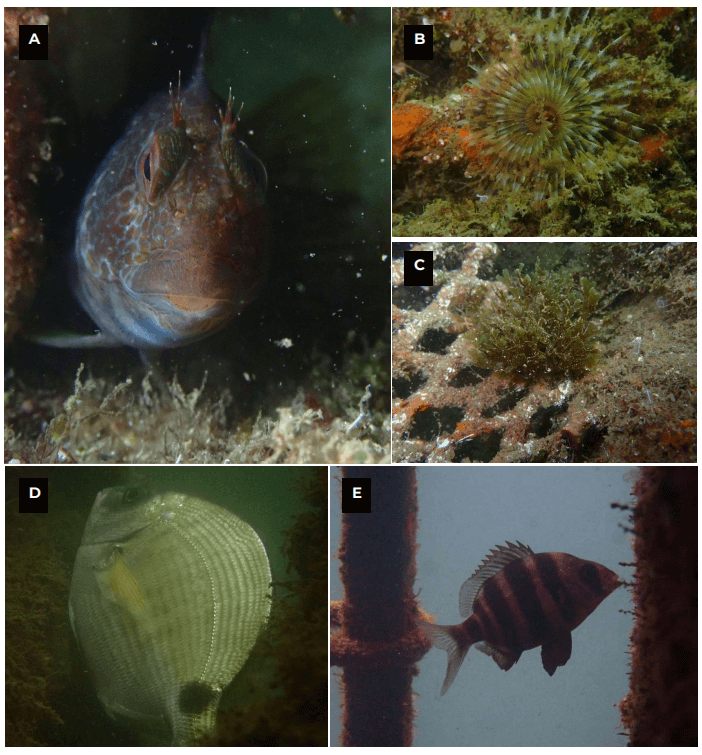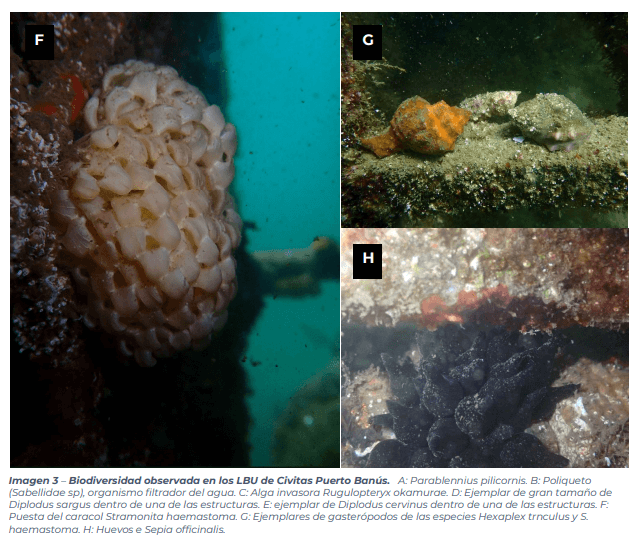In November 2022 we installed in Puerto Banús, in collaboration with Ocean Ecostructures, 10 Life Boosting Units structures in different areas of the port that allow the regeneration of marine biodiversity, restoring life and allowing the revitalization and recycling of marine infrastructure and damaged environments.
Once the first 4 months had passed, the first monitoring of the structures was carried out and during the inspection, the Ocean Ecostructures scientific team identified species present in each of the three points.
After 6 months since the installation, we have received the second report on the evolution of the Bio Boosting System Marine Biodiversity Regeneration System in Puerto Banús, with the results of the winter and spring period, with very surprising figures. The main results obtained in the 10 Life Boosting Units (LBU) in the elapsed period (6 months) are shown.
Up to 56 different species have been reported growing or interacting with LBU structures. The reported figure represents an increase of practically double the number of species compared to the values collected in March 2023 (34 species).
With 40 species, Zone 3 (Outer Mouth) was where the greatest richness was observed, housing 71% of the total census biodiversity. In Zone 2 (interior Bocana) 36 species were observed and in Zone 3 (interior), 16 species.
[Best_Wordpress_Gallery id=”25″ gal_title=”Revitalización de biodiversidad marina con las estructuras Life Boosting Units (LBU)”]
Mainly, the methodology of the scientific study consists of the identification of colonizing species of each structure through visual censuses, as well as observation of biological samples under a magnifying glass and/or microscope.
On the other hand, the biomass in each LBU is studied by weighing the biological material grown on plates of known surface on precision scales (Image 2). This methodology allows for a standardized and precise study of the species present, as well as the productivity of the system (its biomass), without damaging life grown in each LBU.
The findings show that LBU structures have a positive influence on the life cycle of marine species in Puerto Banús
Over the past six months, the communities have been evolving towards more developed stages. The LBUs have been completely colonized by a large number of groups of organisms.
Up to 56 different species have been reported. Among the species found, the presence of organisms such as cuttlefish (Sepia officinalis) can be highlighted, of which eggs were found in several LBUs in Zone 1 and 3 (Image 3H). Clutches as well as adult specimens of the snail Stramonita haemastoma have been detected in Zone 3 (Image 3FG) and the presence of ichthyofauna (fish) has also increased.
Species of blenny fish (Parablennius sp.) have appeared in very abundance in most structures (Image 3-A). Likewise, species such as Diplodus sargus or Diplodus cervinus cervinus with large sizes have been recorded (Image 3D-E).
In March, a notable presence of the invasive algae Rugulopteryx okamurae was reported. Although this species was also detected in the May sampling, its abundance has decreased throughout the port. Its presence in the LBU has been observed in Zones 1 and 2 (Image 3C).
The results collected at the end of May 2023 demonstrate a clear increase in the number of species observed, as well as in the biomass of the LBU. These are very positive figures so far, and represent a success for the regeneration project at Civitas Puerto Banus.
In conclusion, biodiversity and biomass in the LBUs have increased up to 160% since March. Zone 3 (Outer Mouth) shows the most positive results in terms of biodiversity and productivity regeneration, so it could be a target area for the implementation of future marine regeneration actions.
The next scientific inspection in Puerto Banús is scheduled for October 2023.
Consult the II Ocean Ecostructures Report here.



